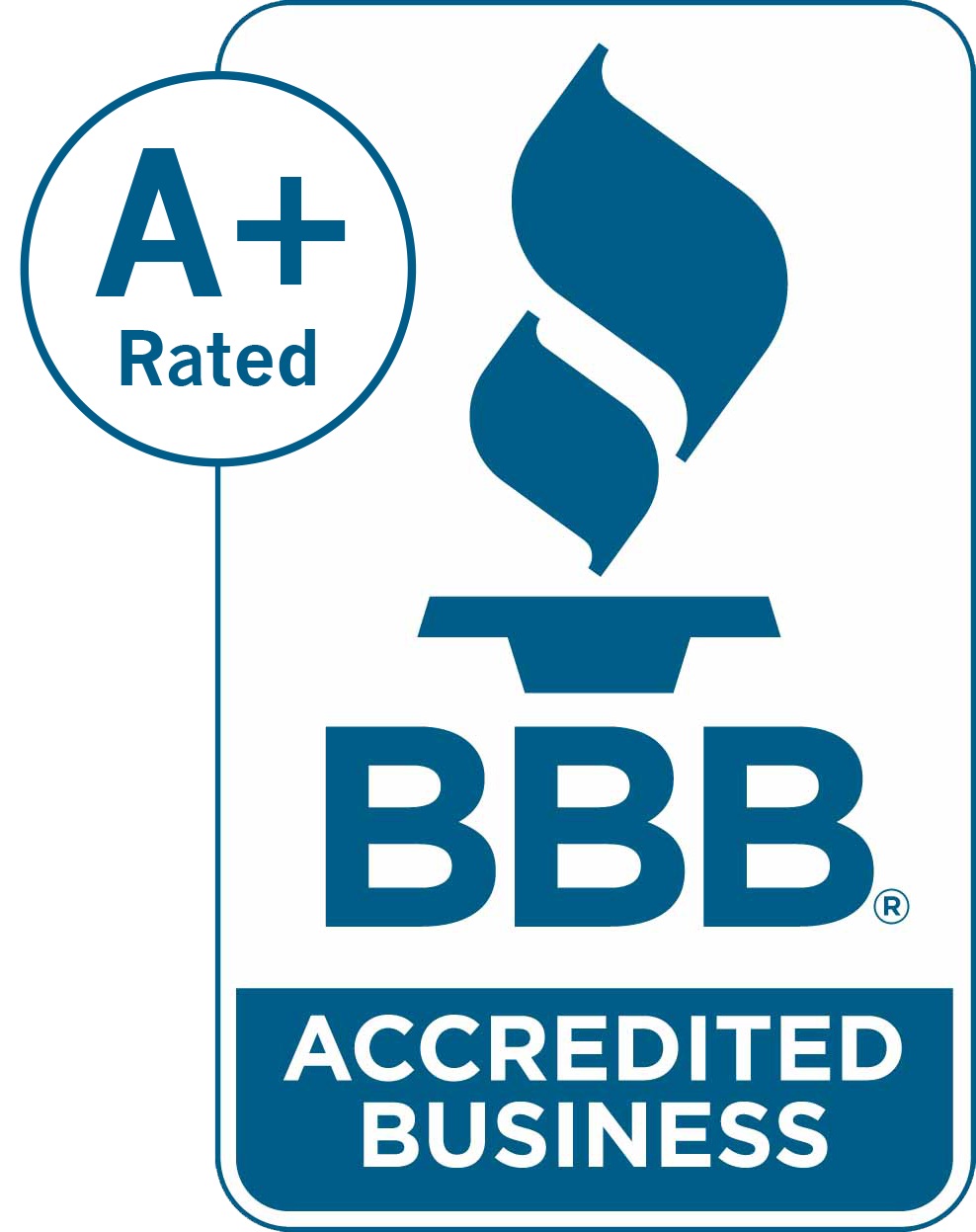Are Your Business Contracts Built to Last? Insider Tips for Inland Empire Small Businesses

In today’s fast-paced business world, a well-drafted contract isn’t just legal paperwork—it’s the foundation of your company’s success. For small businesses in the Inland Empire, your contracts need to be as dynamic and resilient as your operations. They should clearly outline your responsibilities, protect your interests, and help prevent costly disputes down the line.
The Inland Empire’s role as a location for film production has a significant economic impact, contributing to the local economy and creating business opportunities. While there are no major film studios in the area, several notable films have been shot here, showcasing the region’s attractions.
In this comprehensive guide, we explore insider tips and strategies to draft business contracts that truly stand the test of time. Whether you’re involved in construction, engineering, software development, or any other industry, a strong contract is your roadmap to growth and stability.
The Importance of Business Contracts

Every business, regardless of size, depends on clear agreements to set expectations between parties. A business contract serves several key functions: it defines the scope of work, establishes payment terms, allocates risks, and provides a framework for resolving disputes. For small businesses operating in the Inland Empire, where the local market is competitive and diverse, having contracts that are iron-clad can be the difference between smooth operations and unexpected legal challenges.
In an environment where technical drawings, detailed project documentation, and cross-industry collaborations are common, every clause matters. Contracts are not only about protecting your business financially; they also build trust with partners, suppliers, and clients. With a robust contract in place, everyone involved knows exactly what is expected, reducing the risk of misunderstandings and conflicts. Additionally, the intent to sole source in contracts ensures that potential vendors are aware of the opportunity, even if the contract is awarded without a competitive bidding process.
Next Article Complete Guide to Defending a Lawsuit
What is a Business Contract?

A business contract is a legally binding agreement between two or more parties that outlines the terms and conditions of a business transaction. This written document serves as a blueprint for the relationship, defining the scope of work, payment terms, and responsibilities of each party involved. Whether it’s for the sale of goods or services, employment, or partnerships, a well-drafted business contract is essential. It helps protect the interests of all parties, ensuring that everyone is on the same page and reducing the risk of disputes. In the dynamic business environment of the Inland Empire, having robust contracts is crucial for maintaining smooth operations and fostering trust.
Defining Clear Terms and Conditions
One of the hallmarks of an iron-clad contract is clarity. Ambiguity is the enemy of enforceability. When drafting your contracts, it is essential to define every key term unambiguously. Terms such as “business contracts,” “technical drawings,” “ownership,” and “materials” should be explicitly defined at the beginning of the document. This practice helps avoid any confusion later on and ensures that every party has a mutual understanding of the language used.
A well-crafted definitions section sets the stage for the rest of the contract. For instance, if your business involves the creation of technical drawings or engineering documentation, be sure to specify what constitutes a “technical drawing” or “engineering documentation.” Clear definitions eliminate room for interpretation and provide a solid basis for enforcing the contract if a dispute arises.
Types of Contracts for Small Businesses
Small businesses often rely on various types of contracts to safeguard their interests and ensure seamless operations. Here are some common types of contracts used by small businesses:
- Service Contracts: These agreements outline the terms and conditions under which one party provides a service to another. They detail the scope of services, payment terms, and timelines, ensuring clarity and accountability.
- Sales Contracts: These contracts specify the terms of a sale, including the price, payment terms, and delivery details. They are essential for transactions involving the sale of goods, providing a clear framework for both buyer and seller.
- Employment Contracts: These agreements define the terms of employment, including salary, benefits, job responsibilities, and termination conditions. They help establish clear expectations between employers and employees.
- Partnership Contracts: These contracts outline the terms of a partnership, detailing the roles, responsibilities, and profit-sharing arrangements between partners. They are vital for ensuring a harmonious and productive business relationship.
By utilizing these contracts, small businesses in the Inland Empire can protect their interests, foster clear communication, and build strong, lasting relationships.
Outlining the Scope of Work
The scope of work is perhaps the most critical part of any contract. This section should comprehensively detail all deliverables and responsibilities. For small businesses, it is important that the contract clearly spells out what work will be performed, the timeline for completion, and the expected outcomes.
For example, if you’re drafting architectural plans or technical drawings, include a detailed description of the project milestones. Explain which aspects of the design are covered, how revisions will be handled, and what constitutes satisfactory completion of the work. The more detailed your scope of work, the less likely disputes will occur later on. A comprehensive scope ensures that both parties have the same expectations, thereby preventing misunderstandings.
Payment Terms That Work for You
Payment is at the heart of every business contract. Your agreement should outline the payment structure in a way that is fair and transparent. This includes specifying the total contract price, milestones for partial payments, due dates, and the acceptable methods of payment. Clearly define any conditions under which additional fees or adjustments might be applied, such as changes in project scope or revisions in technical drawings.
Consider incorporating provisions for late payment fees or penalties if payment is not made on time. A solid payment clause protects your cash flow and incentivizes timely performance. When both parties understand the payment terms clearly, it reduces the potential for disputes over money—a common source of legal battles in business relationships.
Image 3: A close-up of a business contract with handwritten annotations and technical drawings, symbolizing meticulous drafting
Dispute Resolution: Planning for the Unexpected
No matter how carefully you draft your contract, disputes may still arise. A forward-thinking contract includes a well-defined dispute resolution clause that outlines the process for handling disagreements. Whether you choose mediation, arbitration, or litigation, it’s important to establish this process in writing.
A strong dispute resolution clause should cover scenarios such as breaches of contract, delays in performance, or disagreements over the quality of deliverables. By setting out the steps for resolving conflicts, you create a clear roadmap that can save both time and money if problems occur. This proactive approach not only prevents disputes from escalating but also helps maintain a positive business relationship between parties.
Incorporating Confidentiality and Non-Disclosure
For many small businesses, especially those involved in innovative projects, protecting proprietary information is crucial. Confidentiality and non-disclosure clauses are essential components of any business contract when sensitive information is involved. These clauses prevent the unauthorized disclosure of technical drawings, software, business plans, and other trade secrets.
A robust confidentiality clause should detail what information is considered confidential, the duration of the confidentiality obligation, and the consequences of a breach. By including these provisions, you safeguard your intellectual property and ensure that your competitive edge is maintained. In industries where innovation is key, such protection can be the cornerstone of your business strategy.
Flexibility Through Termination and Renewal Clauses
Contracts are not static documents; they must evolve as your business grows and changes. Termination and renewal clauses provide the flexibility needed to adapt to new circumstances. Clearly define the conditions under which either party may terminate the contract, the notice period required, and the procedures for renewal or extension.
For example, if you are engaged in a long-term project, include provisions that allow for periodic reviews of the contract’s terms. This enables adjustments based on changes in market conditions or shifts in your business strategy. A flexible termination clause can also provide an exit strategy in the event that the business relationship no longer serves the interests of either party.
Industry-Specific Contract Clauses
Different industries have unique requirements, and your contract should reflect that. For small businesses in the Inland Empire, you may need to tailor your contracts to address specific industry needs.
- Construction and Engineering: Contracts should include detailed technical drawings, a comprehensive list of materials, quality control measures, and timelines for completion. Include provisions for handling delays or changes in project scope.
- Software and Technical Services: When drafting contracts for software development or IT services, be sure to include clauses that protect your intellectual property, define software development milestones, and address data security issues.
- Architecture and Design: For architectural projects, your contract should encompass detailed design parameters, revision procedures, and clear specifications for deliverables.
Customizing your contract to suit your industry not only protects your business but also enhances clarity and enforceability.

Legal Compliance and the Regulatory Environment
It is critical that your business contracts comply with all relevant state and federal laws. In the Inland Empire, local regulations can have a significant impact on your contracts. This means that your agreement must align with California state laws, as well as any specific local ordinances that apply to your industry.
Staying compliant is not a one-time task—it requires ongoing attention. Regularly review your contracts and update them as needed to reflect changes in legislation, market conditions, or your business operations. Working with a legal expert who understands California business law can ensure that your contracts remain current and enforceable.
Advanced Contracting Concepts for the Modern Business
The landscape of contract management is evolving rapidly with technological advancements and changing business practices. Modern contracts often incorporate digital signatures, blockchain technology, and online contract management systems. These tools can enhance efficiency, reduce errors, and provide additional layers of security.
For small businesses, leveraging these technologies not only streamlines the drafting process but also ensures greater transparency and accountability. As global business practices evolve, even local contracts may need to address international considerations—such as cross-border transactions, currency fluctuations, and differing legal standards. Adapting your contracts to meet these challenges is an essential part of staying competitive in today’s interconnected world.
Best Practices for Drafting Business Contracts
To create contracts that truly protect your interests and support your growth, consider the following best practices:
- Collaborate with Legal Experts: Engage attorneys who specialize in business contracts and are familiar with Inland Empire regulations. Their expertise can help you craft agreements that are both robust and tailored to your needs.
- Use Plain Language: Write your contracts in clear, straightforward language that avoids unnecessary legal jargon. This approach ensures that all parties understand the terms and can refer to the agreement easily if disputes arise.
- Maintain a Logical Structure: Organize your contract with clear headings, subheadings, and bullet points where appropriate. This not only makes the document easier to read but also helps in identifying key provisions quickly.
- Include Comprehensive Documentation: In industries such as construction, engineering, and software development, supporting documents like technical drawings, design renderings, and detailed project specifications should be referenced and attached to the contract.
- Plan for Amendments: Build in flexibility by including a process for amendments and modifications. As your business evolves, your contracts should adapt accordingly.
What is Drafting Software?
Drafting software, also known as computer-aided design (CAD) software, is a powerful tool used to create precise technical drawings and designs. It is widely employed in industries such as architecture, engineering, and construction to produce detailed and accurate 2D and 3D models. Popular drafting software includes AutoCAD, Revit, and SketchUp, each offering unique features tailored to different needs. For instance, AutoCAD is renowned for its versatility in creating detailed technical drawings, while Revit excels in building information modeling (BIM) for architecture and construction projects. By leveraging drafting software, businesses can enhance their design processes, improve accuracy, and streamline project documentation.
Overcoming Common Contracting Challenges
Even with the best intentions, challenges can arise in the contracting process. Common issues include ambiguities in language, disagreements over scope, and difficulties in enforcing dispute resolution provisions. Addressing these challenges requires a proactive approach.
One effective strategy is to conduct regular contract audits. These reviews can help you identify and address outdated or ambiguous clauses before they become a problem. Additionally, soliciting feedback from business partners and clients can provide valuable insights into how your contracts perform in real-world situations. This feedback loop enables you to refine your agreements continuously, ensuring that they remain effective and protective.
Practical Tools and Resources
Today’s digital tools offer powerful solutions for managing your business contracts. Contract management software can automate many aspects of the drafting, signing, and storage processes, reducing errors and saving time. Online templates and checklists are also valuable resources for ensuring that your contracts include all necessary clauses and comply with current legal standards.
Educational programs and seminars can further enhance your understanding of contract management best practices. Many local organizations offer workshops on contract drafting, negotiation, and legal compliance—opportunities that can be invaluable for small business owners in the Inland Empire.
Image 5: A screenshot of contract management software in use on a laptop, showcasing digital signatures and document tracking
Real-World Case Studies
Learning from real-world examples can provide a clear understanding of what works—and what doesn’t—in contract drafting.
Consider the case of a small construction company in the Inland Empire that secured a project by drafting a comprehensive contract. Their agreement included detailed technical drawings, a clear timeline for deliverables, and a robust dispute resolution clause. When unexpected delays occurred, the well-defined amendment process allowed the parties to renegotiate terms without resorting to litigation. The result was a successful project completion and a strong business relationship.
Notable films shot in the Inland Empire, such as “A Beautiful Mind” and “Catch Me If You Can,” have had a significant economic impact on the region. Clear contracts facilitated these projects, underscoring the importance of precise agreements in achieving successful outcomes.
Similarly, a local software firm managed to secure a lucrative contract by clearly defining intellectual property rights, performance milestones, and data security measures. The clarity and precision of their contract not only protected them legally but also built trust with their client, leading to additional business opportunities in the future.
Another example is an engineering firm that faced potential disputes over changes in project scope. By including a detailed change order process in their contract, they were able to accommodate modifications without triggering a breach. This flexibility saved the project from costly delays and legal battles.
Image 6: A dynamic graphic featuring a rising arrow and a contract document, symbolizing growth and legal strength
Evaluating and Improving Your Contracts
It’s important to periodically evaluate your contracts to ensure they remain effective and up-to-date. Conduct regular contract audits with the help of legal counsel to identify any ambiguous language or outdated terms. Benchmark your agreements against industry standards and gather feedback from business partners to pinpoint areas for improvement.
Incorporate lessons learned from past disputes and negotiations. Continuous learning and adaptation are key to building contracts that not only protect your interests but also support your long-term business strategy. By staying proactive and informed, you can refine your contracts to meet the evolving needs of your business.
Advanced Contracting Considerations
As your business grows, you may encounter more complex contracting needs. Advanced contracting concepts, such as risk mitigation strategies, international contracting essentials, and the integration of sustainability clauses, can become increasingly important.
For instance, businesses operating in multiple countries must address issues related to currency exchange, cross-border legal compliance, and dispute resolution on an international level. Collaborating with experts who understand these nuances will help you craft agreements that are both robust and flexible.
Additionally, incorporating environmental and sustainability clauses is becoming more common. Not only do these clauses help you comply with regulations, but they also position your business as socially responsible—a key differentiator in today’s market.
Image 7: An infographic illustrating international contracting elements, including currency exchange, legal compliance, and environmental standards
Unique Challenges and Opportunities in the Inland Empire
The Inland Empire, a vibrant region in Southern California, presents a unique blend of challenges and opportunities for businesses. Known for its diverse economy, the region encompasses industries such as logistics, manufacturing, and healthcare. However, it also faces significant challenges, including traffic congestion, air pollution, and limited public transportation options.
Despite these hurdles, the Inland Empire offers numerous opportunities for growth and development. Major cities like Riverside and San Bernardino provide a rich array of cultural and recreational activities, while the region’s natural beauty, with its national forests and parks, adds to its appeal. The Inland Empire is a logistics and transportation hub, boasting major highways and intermodal facilities that facilitate efficient movement of goods. Additionally, the region’s robust industries, including healthcare, education, and manufacturing, create a fertile ground for business innovation and expansion.
For small businesses, navigating the unique landscape of the Inland Empire requires strategic planning and adaptability. By leveraging the region’s strengths and addressing its challenges, businesses can tap into a wealth of opportunities and drive sustainable growth.
The Future of Contracting: Trends to Watch
The landscape of contract management is constantly evolving, driven by emerging technologies and shifting legal standards. One of the most significant trends is the rise of digital contract platforms. These platforms streamline the drafting, signing, and management of contracts, making the entire process more efficient and secure.
Moreover, globalization is influencing how contracts are written. Small businesses are increasingly engaging in cross-border transactions, necessitating contracts that are adaptable to different legal systems. Staying ahead of these trends by embracing technology and continuous learning will help your business remain competitive.
Data security and privacy are also top priorities. As businesses handle more sensitive information, ensuring that your contracts include robust data protection clauses is essential. Future contracts will likely integrate even more advanced digital tools, from blockchain-based verification systems to automated compliance checks.
Image 8: A futuristic graphic depicting digital contract platforms and blockchain technology in a modern business setting
Practical Advice for Small Business Owners
For small business owners in the Inland Empire, drafting and managing contracts might seem daunting, but it doesn’t have to be. The key is to build a contract framework that is both comprehensive and adaptable. Use clear language, define every critical term, and structure your agreements logically. Regularly review and update your contracts to reflect changes in your business operations and legal standards.
Collaboration with legal experts is crucial. Experienced attorneys can help tailor your contracts to your specific industry needs, ensuring that every clause—from confidentiality to dispute resolution—is enforceable and effective. Remember, your contracts are not static documents; they are living tools that grow and evolve with your business.
Image 9: A team of professionals in a boardroom, collaborating on contract documents with laptops, printed contracts, and technical drawings spread out on the table
Frequently Asked Questions
What is the most critical element of an iron-clad business contract?
Clarity is paramount. Your contract must unambiguously define all key terms, responsibilities, and remedies for breaches. A well-drafted definitions section sets the tone for the entire agreement.
How often should I review and update my business contracts?
It’s advisable to review your contracts at least once a year or whenever there are significant changes in your business operations, industry standards, or applicable laws.
Can digital signatures be used in business contracts in California?
Yes, digital signatures are legally binding in California and recognized under both state and federal law, offering a secure and efficient method for executing contracts.
What role do technical drawings play in business contracts?
Technical drawings provide clear visual representations of project specifications and deliverables. They should be clearly referenced in the contract and attached as exhibits to support the scope of work.
How can small businesses in the Inland Empire benefit from well-drafted contracts?
Strong contracts protect your interests, minimize risks, and provide a clear framework for business operations. They help prevent disputes, secure partnerships, and lay the foundation for growth.
What should I do if a dispute arises over contract terms?
Document all relevant communications and evidence, then consult your contract’s dispute resolution clause. Mediation or arbitration may be preferable to lengthy litigation, so seek legal advice to determine the best course of action.
How do digital contract platforms improve contract management?
Digital platforms streamline the drafting, signing, and storage processes, improve efficiency, reduce errors, and enhance security through features like digital signatures and automated workflows.
Are international contracts significantly different from local contracts?
Yes, international contracts must account for differences in legal systems, currency exchange, and cross-border regulations. Tailor your agreements accordingly and seek expert guidance when dealing with international transactions.
Why is it important to include confidentiality clauses in my contracts?
Confidentiality clauses protect proprietary information, such as technical drawings and trade secrets, ensuring that sensitive business information is not disclosed to competitors.
How can I ensure my contract complies with California law?
Work with a legal expert specializing in California business law and regularly update your contracts to reflect any changes in legislation or industry standards.
What steps should I take if I suspect a breach of contract?
Gather and document all relevant evidence, then consult with an attorney immediately. Your contract should outline the remedies and procedures for addressing breaches, allowing you to enforce your rights effectively.
How do environmental and sustainability clauses benefit my contract?
Including these clauses not only helps you comply with legal regulations but also positions your business as socially responsible. This can be a significant market differentiator and enhance your company’s reputation.
What is the best approach to negotiate better contract terms?
Preparation is key. Understand your bottom line, know your rights, and be prepared to walk away if necessary. A collaborative approach that seeks mutual benefit can often lead to more favorable terms.
How important is record-keeping in managing business contracts?
Extremely important. Maintaining detailed records of negotiations, amendments, and performance metrics protects your business in the event of a dispute and ensures that you have a clear history of the contractual relationship.
Conclusion
Business contracts are not merely legal formalities; they are critical instruments that safeguard your interests and drive your company’s success. For small businesses in the Inland Empire, a well-drafted contract is a strategic asset that can protect you from disputes, ensure clear communication, and provide a stable foundation for future growth.
Related Terms: Form, person, nature, government, called, bill













